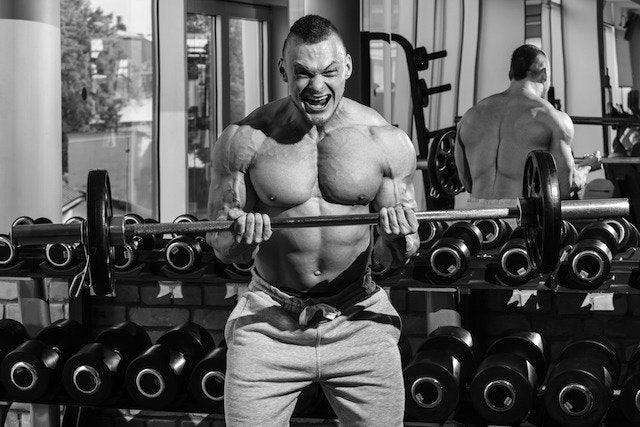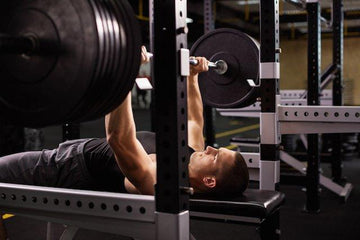

The 3/7 Protocol for More Muscle and Strength
Table of Contents
The 3/7 Protocol for More Muscle and Strength
By: Robbie Durand
There has been some stunning new research that has rocked the bodybuilding world with evidence showing that you don’t need to train heavy to increase muscle mass. This goes against everything that most lifters have been taught about bodybuilding. Everyone has seen the old black and white pictures of Dorian Yates, where he has every plate loaded up on the back machine. The new research has found that resistance training protocols consisting of both heavy and lite weights stimulate similar gains in muscle mass, but heavier weight stimulates greater strength gains.
A new strength training method designed to induce intense metabolic stress called the 3/7 protocol. The basic protocol consists of 5 sets of an incremental number of repetitions during the successive sets (from 3 to 7 repetitions), a moderate load (~70–80 % 1RM), and very brief rest interval between sets (≤15 seconds). This method is unique in that the training volume is relatively low (25 repetitions in total) and collapsed into a short period of time(<2 minutes).
So here is the protocol:
Five sets, 3-7 repetitions, less than 15 second rest periods.
A previous study reported the gains in 1RM load and maximal strength in bench press exercise after the 3/7 protocol were almost similar than those recorded in response to a more classical training protocol that consisted of 8 sets of 6 repetitions (8 × 6 protocol) performed with identical load intensity and longer rest interval between sets (2.5 minutes). This is exciting because it shows that strength gains can be achieved with low short rest periods. This study suggests that not only can metabolic stress increases muscle mass but it can also stimulate strength gains.
Researchers wanted to compare the 3/7 protocol and its physiological effects on the muscle itself by examining muscle activity and tissue oxygen(i.e. metabolic stress). Researchers examined the acute effects of a single training session on muscle activity, and oxygenation was compared between a new strength training method (3/7 protocol) and a more classical method (4 × 6 and 8 × 6 protocols). All protocols consisted of lifting and lowering a load (70 % 1RM) with the biceps muscle. The 3/7 protocol involved five sets of increasing number of repetitions during successive sets (from 3 to 7 repetitions), and brief rest interval between sets (15 s). The other two protocols consisted of either 4 or 8 sets of 6 repetitions with a rest interval between sets of 2.5 min.
At the end of the study, when the researchers crunched all the data, they found that the 3/7 protocols demonstrated superiority over more traditional strength training protocols, during a strength training program. 3/7 protocol resulted in greater muscle activity and tissue oxygenation (i.e. metabolic stress) than the standard classic protocol. The deficit in tissue oxygen deficit per repetition was higher in the 3/7 protocol than 4 × 6 and 8 × 6 protocols for biceps.
 The scientists were quoted saying, “The results indicate that brief rest interval between sets and incremental number of repetitions in successive sets induced greater muscle activity and metabolic changes compared with method of constant repetitions per set and longer rest interval. One of the advantages of the 3/7 protocol is that it requires less than 5 min per exercise to be completed, and can, therefore, be easily incorporated into any weight training session to train specific muscle groups. Also, the lower total workload needed to obtain similar strength gains with the 3/7 protocol than with the classical method may reduce the risk of overtraining.”
The scientists were quoted saying, “The results indicate that brief rest interval between sets and incremental number of repetitions in successive sets induced greater muscle activity and metabolic changes compared with method of constant repetitions per set and longer rest interval. One of the advantages of the 3/7 protocol is that it requires less than 5 min per exercise to be completed, and can, therefore, be easily incorporated into any weight training session to train specific muscle groups. Also, the lower total workload needed to obtain similar strength gains with the 3/7 protocol than with the classical method may reduce the risk of overtraining.”
Key Points: The study found that the 3/7 Protocol stimulated greater muscle activation and metabolic stress than a traditional weight training program in a shorter time period.
Penzer F, Cabrol A, Baudry S, Duchateau J. Comparison of muscle activity and tissue oxygenation during strength training protocols that differ by their organisation, rest interval between sets, and volume. Eur J Appl Physiol. 2016 Jul 20.
Ahtiainen JP, Pakarinen A, Alen M, Kraemer WJ, Häkkinen K (2005) Short vs. long rest period between the sets in hypertrophic resist- ance training: influence on muscle strength, size, and hormonal adaptations in trained men. J Strength Cond Res 19:572–582
Baudry S, Sarrazin S, Duchateau J (2013) Effects of load magnitude on muscular activity and tissue oxygenation during repeated elbow flexions until failure. Eur J Appl Physiol 113:1895–1904
de Salles BF, Simão R, Miranda F, Novaes S, Lemos A, Willardson JM (2009) Rest interval between sets in strength training. Sports Med 39:765–777
Felici F, Quaresima V, Fattorini L, Sbriccoli P, Filligoi GC, Ferrari M (2009) Biceps brachii myoelectric and oxygenation changes during static and sinusoidal isometric exercises. J Electromyogr Kinesiol 19:1–11
Legeard E (2005) Force: entraînement et musculation, de la théorie à la pratique. Amphora, Paris
Manini TM, Clark BC (2009) Blood flow restricted exercise and skel- etal muscle health. Exerc Sport Sci Rev 37:78–85
Ratamess NA, Falvo MJ, Mangine GT, Hoffman JR, Faigenbaum AD, Kang J (2007) The effect of rest interval length on meta- bolic responses to the bench press exercise. Eur J Appl Physiol 100:1–17
Rooney KJ, Herbert RD, Balnave RJ (1994) Fatigue contributes to the strength training stimulus. Med Sci Sports Exerc 26:1160–1164

















